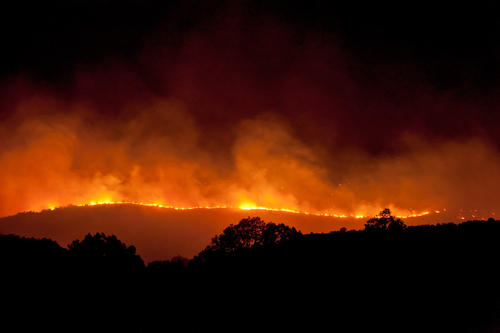Some 52% of economic output in Arizona, California, Idaho, Nevada, Oregon, Utah, and Washington originates in counties with elevated wildfire hazard, putting the economies of the region in jeopardy as wildfires become more frequent and more destructive, the researchers found. By 2040 that proportion will have risen to 56%, they estimate. By comparison, about 25% to 30% of the Southeast's economy faces elevated wildfire risk.
The states together account for a bit more than one-fifth of U.S. economic output.
"The portion of real output produced in (the counties of these states) with elevated exposure increases from $2.1 trillion in 2018 to $4.0 trillion in 2040 in the baseline scenario," the researchers wrote in the regional Fed's latest Economic Letter. The economic output under particular wildfire threat rises to $4.4 trillion under a more severe climate change scenario, they said.
Wildfire risk is a combination of the likelihood of a big fire happening - which climate scientists have shown has been rising as the planet warms - and the economic destruction, in terms of lives and livelihoods destroyed that it could cause.
The coronavirus pandemic is increasing the latter risk because the fiscal pinch to states and local governments from the drop in sales tax and other revenue means cuts to wildfire suppression and prevention spending, the researchers said.













